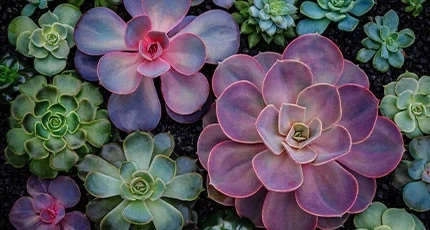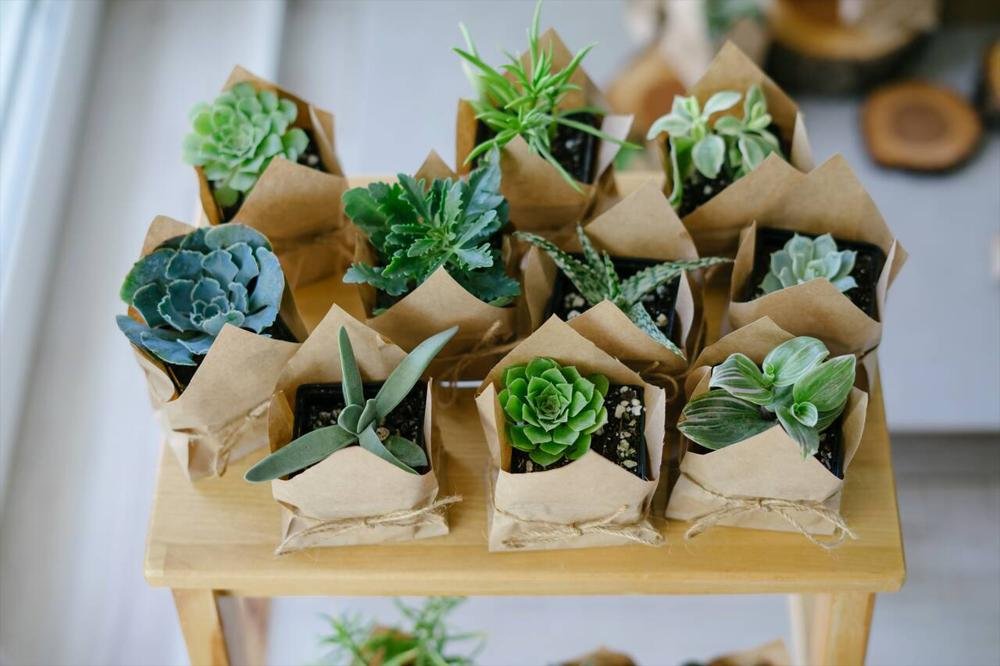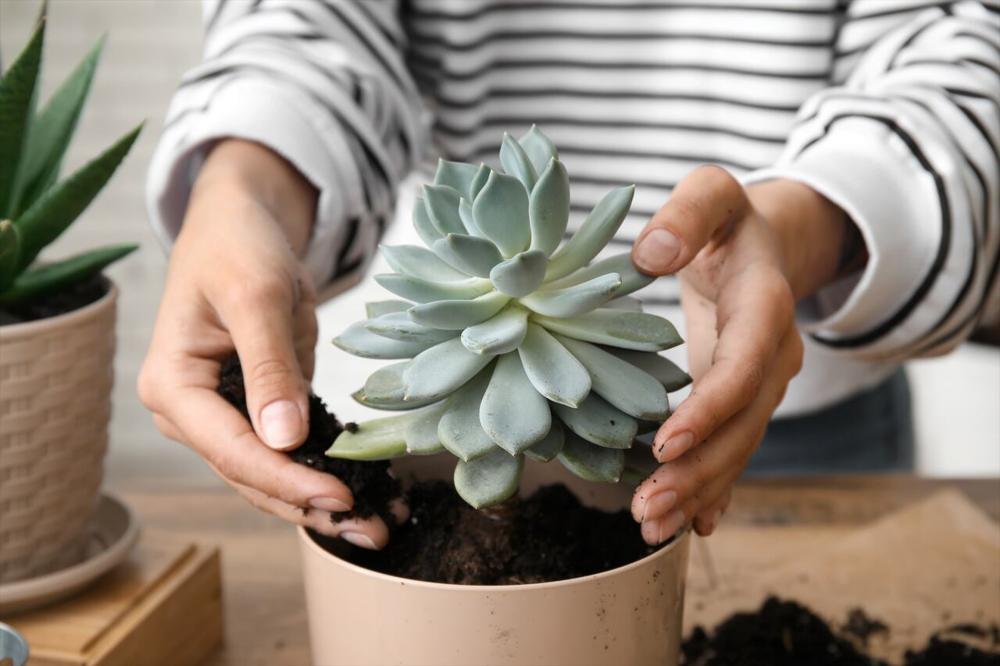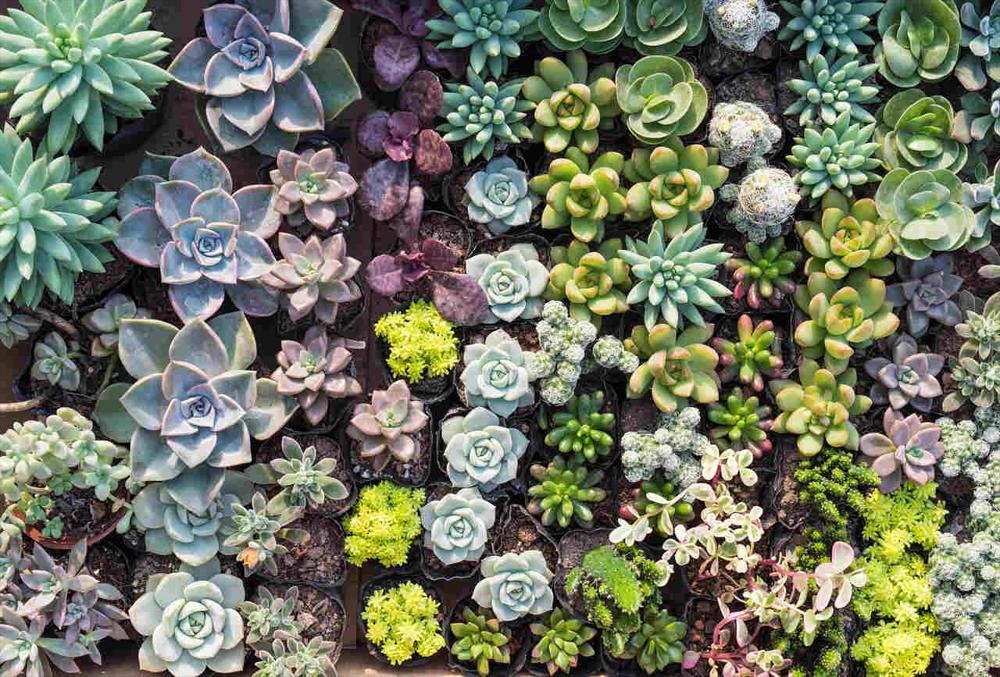
Succulents are aquatic plants that typically thrive in hot and dry climates. The main feature of these plants is their ability to store water for survival. Their thornless and thick leaves enhance their water retention capabilities, allowing them to withstand drought conditions for extended periods. Succulents come in a variety of colors and shapes; their flowering can be quite striking.
Their visual appeal makes them popular for indoor and outdoor decorations. Their easy maintenance and variety of species make them attractive to garden enthusiasts and plant lovers. Additionally, most succulents are quite adaptable in terms of rooting and propagation, making them a preferred plant type for hobby gardeners.

Succulents are called "succulent," a term derived from the word "sucu," which comes from the Latin word "sucus," meaning "juice" or "sap." Succulent plants can retain more water in their system compared to other plants due to their water storage capability. They absorb and store water through their thick, fleshy leaves or stems.
These features allow aquatic plants to survive in dry and hot climates, enabling them to endure long periods without water. By efficiently using the water they contain, succulents are captivating plant species that can thrive in areas where water is scarce. Due to these characteristics, the term "succulent" emphasizes these plants' ability to store water.

While succulents boast a wide range of species, some common and popular types include Echeveria, Aloe, Sedum, Crassula, Haworthia, Kalanchoe, Agave, Gasteria, Sempervivum, and Schlumbergera. Echeveria is known for its colorful leaves forming beautiful rosettes, while Aloe species are famous for gels used especially on the skin. Sedum and Crassula are favored for their resilience and variety of colors. The care for succulents varies depending on these types.
Haworthia species have distinctive patterned protruding leaves, while Kalanchoe varieties attract attention with their bright-colored flowers. Agave is recognized for its fleshy leaves, and Agave tequilana, used in tequila production, is also a succulent type. Gasteria, Sempervivum, and Schlumbergera are attractive succulent types commonly preferred in indoor decoration.
If you're interested in potted plants, you can also check out our Pot Plant Names article for more detailed information.

Succulents are hardy plants that require low maintenance. There are key points to consider for successful succulent care. First, it is important to ensure that succulents receive the right amount of sunlight; they should typically avoid direct sunlight but be placed in bright light. Watering is one of the most important factors for succulent flower care.
Succulents are generally hardy plants under the right care conditions, but they can encounter some diseases and pests. The most common diseases include root rot, leaf spots, and fungal infections. Pests such as aphids, spider mites, and whiteflies are notable. Important steps to protect against diseases and pests include:
Frequent watering can lead to root rot in succulent cacti care; therefore, it is better to water when the soil is completely dry. Succulents should be grown in light, sandy soil with good drainage. Especially in winter, drainage in the succulent care routine is important to protect the roots of the flower.
The frequency of watering may vary based on climate conditions and the type of plant. Proper fertilization for succulents should be done during the growth season. A low amount of balanced liquid succulent fertilizer should be preferred. Excessive fertilization can harm the plant, so it's important to apply the dose specified on the label. Frequent fertilization in the summer should be reduced in the winter as the plant enters a state of dormancy.
Avoiding over-fertilization is crucial in maintaining the health of leaves and roots. If grown indoors, bringing plants outside occasionally can provide ventilation. Succulents can be grown healthy and beautifully with easy observation and simple care steps.

Propagation of succulents can be successfully carried out using different methods. The most common propagation methods include:

Succulents are ideal plants for indoor cultivation because they attract attention with their low maintenance requirements and pleasant appearance. To create an indoor succulent garden, you can follow these steps:

Leaf shedding and yellowing in succulents can occur due to various reasons. Leaf shedding may be viewed as a natural aging process in some species. Leaves can dry out and fall over time. However, overwatering, waterlogged soil, and root rot can also cause leaf drop.
Yellowing of leaves is usually a symptom of overwatering or root rot, nutrient deficiencies, pests, or diseases. Dry or diseased leaves can be easily removed by gently pulling them from the base.
It is important to inspect your plant to diagnose the cause of the problem. If the issue originates from the roots, transferring to a new pot with healthy roots may be necessary. Adjusting the watering schedule and feeding the plant can help restore the color of its leaves.